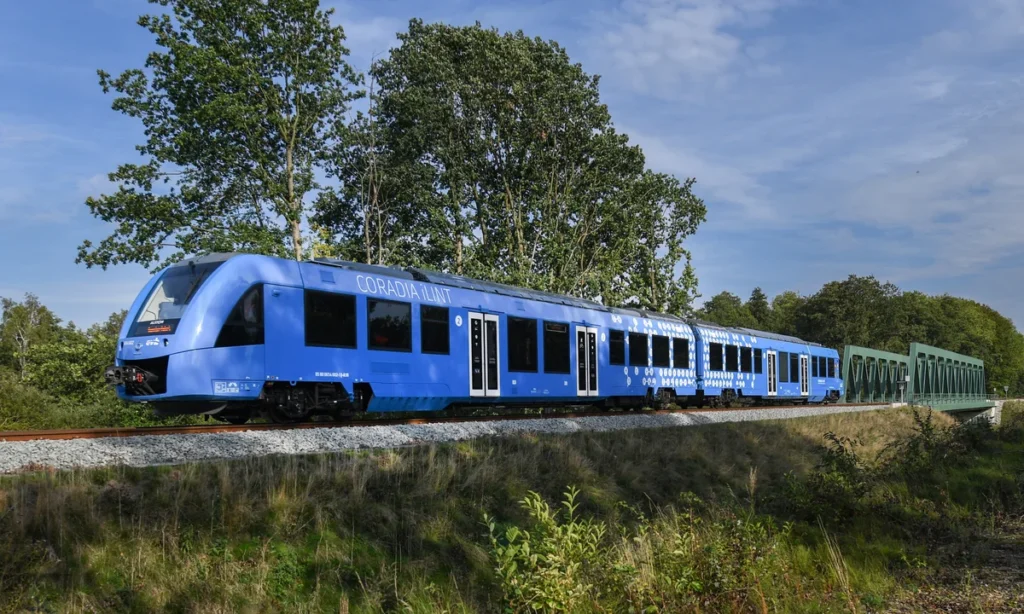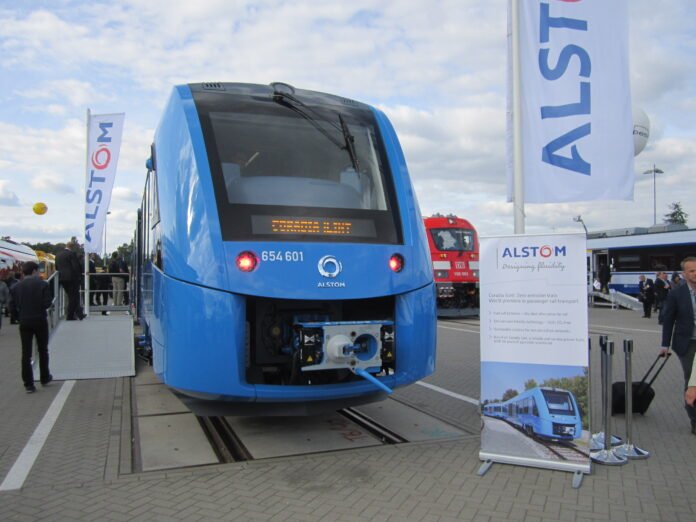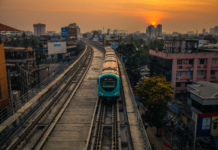Introduction
Indian Railways stands as one of the largest railway networks in the world. Over the years, Indian Railways has evolved to cater to the various needs of the country, and today it serves as the backbone of India’s transportation Infrastructure. It is a key component of the country’s economy and overall infrastructure.
As of 2024, the Indian Railways is recognised as the fourth largest railway network globally in terms of size, encompassing a total network length of 68,584 kilometres.
Indian Railways’ historic journey began with the commencement of its first passenger train service, which covered a 34-kilometre route between Bombay and Thane. The train was moved by a steam locomotive.
For more than a century, steam engines dominated the network, relying heavily on coal and water. However, the steam locomotives were highly inefficient and contributed to pollution and maintenance challenges. To address these challenges and increase the capacity of rolling stock, Indian Railways deployed electric trains. The introduction of electric trains was not only more efficient than steam locomotives but also helped reduce pollution in major cities. On 3 February 1925, the first electric train operated between Bombay and Kurla.
To further strengthen rail transportation, Indian Railways incorporated diesel-powered trains into its operations. In 1957, Indian Railways imported its first mainline diesel locomotive from the American Locomotive Company (ALCO) in New York and named it as WDM1. However, Diesel locomotives were highly dependent on petroleum products, which raised concerns over fuel dependency and environmental impact.
Recognising these challenges, Indian Railways explored more sustainable and energy-efficient alternatives. One of the most promising recent innovations of Indian Railways is the introduction of hydrogen-powered trains. Unlike other trains, hydrogen-powered trains do not require electrified tracks. This eliminates the substantial costs associated with establishing electrified infrastructure, rendering hydrogen trains a preferable alternative for non-electrified routes, particularly in rural and underdeveloped regions.
The transition of Indian Railways to hydrogen trains is in line with India’s overall vision of lowering carbon emissions, enhancing energy independence, and shifting towards green mobility solutions in the transport sector.

Hydrogen-Powered Trains: The Future of Sustainable Rail Mobility
Overview
- The introduction of hydrogen trains is part of Indian Railways’ comprehensive strategy to modernise its infrastructure and reduce its environmental impact, aligning with the national goal of achieving net-zero emissions by 2030.
- Hydrogen trains serve as an innovative and eco-friendly alternative to conventional rail transport by utilising hydrogen fuel cells rather than traditional diesel or electricity supplied by overhead lines. These trains generate zero direct emissions, producing only water vapour and heat as byproducts, which makes them a better solution in the advancement of sustainable transportation.
India’s Engineering Pride: First Indigenous Hydrogen Train
The journey of the first hydrogen train in India began with the Research Designs and Standards Organisation (RDSO) finalising the design specifications for the hydrogen fuel cell-based train in December 2021, ensuring the technology would be “Made in India.”
The Integral Coach Factory (ICF) in Chennai was entrusted with the critical task of manufacturing the hydrogen-powered trains. This involved designing and producing coaches that could not only carry passengers but also house essential components such as hydrogen cylinders, fuel cell converters, batteries, and air reservoirs.
India’s hydrogen-powered engine, engineered with indigenous technology, possesses the capability to deliver an impressive 1200 horsepower, exceeding the performance levels of global counterparts that typically operate within the range of 500 to 600 horsepower
The train is engineered to feature eight coaches, with a capacity to transport up to 2,638 passengers and achieve speeds of 110 km/h, thereby ensuring efficient and timely travel.
Indian Railways’ Hydrogen for Heritage Initiative
In February 2023, the Indian Railways unveiled its initiative to operate 35 Hydrogen Trains as part of the ‘Hydrogen for Heritage‘ initiative, aimed at mitigating carbon emissions and promoting environmentally sustainable practices. This development was confirmed by the Union Minister of Railways, Ashwini Vaishnaw, during a written response to an inquiry in the Rajya Sabha in 2023.
Indian Railways Pilot Project for Hydrogen Trains
October 2021: Indian Railways issued the tender for a pilot project for converting a Diesel Electric Multiple Unit (DEMU) rake into a hydrogen-powered train. This pilot initiative is scheduled to be operational on the Jind-Sonipat section of the Northern Railway.
September 2022: Medha Servo Drives, which is undertaking the pilot project for the retrofitment of a hydrogen fuel cell onto an existing Diesel Electric Multiple Unit (DEMU), placed an order for hydrogen fuel cell modules from Ballard Power Systems. The order was for eight units of 100 kW FCmove™-HD+ fuel cells.
In 2023, Union Railway Minister Ashwini Vaishnaw announced that Indian Railways has entrusted the pilot project worth Rs 111.83 crores for the retrofitment of a hydrogen fuel cell onto a running Diesel Electric Multiple Unit (DEMU) rake along with the corresponding ground infrastructure.
Furthermore, the Ministry of Railways earmarked ₹2,800 crore in the 2023-24 budget for the development of hydrogen-powered trains.
The projected cost for each hydrogen train is approximately ₹80 crore, with an additional ₹70 crore per route to cover the ground infrastructure.
October 2023: GreenH Electrolysis, a joint venture between H2B2 Electrolysis Technologies and GR Promoter Group, entered into a contract with Medha Servo Drives to establish a hydrogen production and refuelling station in Jind, Haryana. GreenH is responsible for the Engineering, Procurement, and Construction (EPC) of the station.
In October 2024, GreenH Electrolysis unveiled its 1 MW PEM electrolyser at its manufacturing unit in Jhajjar, Haryana. This electrolyser is planned for installation at the hydrogen production and refuelling station in Jind, Haryana.
Key Features:
- The electrolyser is designed to generate approximately 430 kilograms of hydrogen daily at a pressure of 40 bar (g), adhering to the ISO 14687 purity standard, which is suitable for fuel cell applications.
- The refuelling station will also include the following:
- 3,000 kg hydrogen storage system,
- A compressor and two hydrogen dispensers with pre-coolers,
These essential components will ensure quick and efficient refuelling of hydrogen-powered trains.
From Vision to Reality: First Hydrogen Train Trials
In April 2025, Indian Railways began trial runs of its first hydrogen-powered train on the 89-kilometre route, which spans between Jind and Sonipat.
A senior official at Indian Railways has stated that the preliminary trial runs have been primarily successful. However, during the testing of the train, it was identified that the capacity of its hydrogen fuel cell must be increased to enable optimal performance under maximum load-carrying conditions.
An estimated additional timeframe of 2 to 3 months is required for technical adjustments and testing. This delay has already pushed back the original launch timeline of December 2024. The railway now aims to introduce the train on the iconic Kalka–Shimla route by mid-2025.
The Global Shift Toward Hydrogen-Powered Trains: A New Era in Clean Rail Transportation
1. Germany: Alstom Coradia iLint
Coradia iLint stands as the world’s first train that runs on hydrogen-based fuel. The train was developed by Alstom at its Salzgitter facility in Germany.
The train was first introduced at the InnoTrans event in Berlin in 2016 and began commercial operations in Germany by 2018.
The Coradia iLint represents the inaugural passenger train that employs a hydrogen fuel cell to produce electrical power for traction purposes.. This train operates without emitting carbon dioxide (CO2) and produces only water as a byproduct.
On Thursday, September 15, 2022, the Alstom Coradia iLint achieved a noteworthy milestone by successfully travelling 1,175 kilometres without requiring refuelling of its hydrogen tank.
2. UK’s: HydroFLEX
HydroFLEX is the UK’s first hydrogen-powered train, developed by fitting a hydrogen fuel system onto an existing Class 319 train.
The Hydroflex initiative is a joint project between the University of Birmingham’s Centre for Railway Research and Education (BCRRE) and Porterbrook.
The idea for HydroFLEX was first introduced at the Rail Live event in June 2018. A working version of the train was later showcased at the same event in June 2019, held at the Quinton Rail Technology Centre.
The goal of the project is to help reduce carbon emissions on the UK rail network by replacing diesel-only trains with hydrogen-powered ones by 2040. It supports the UK Government’s goal of reducing carbon emissions by 80% by 2050
3. Swiss: Stadler FLIRT H2
The FLIRT H₂ train is an electric multiple unit incorporating hydrogen fuel cell technology, developed by the Swiss manufacturer Stadler Rail. Stadler unveiled the FLIRT H₂ to the public at InnoTrans 2022 in Berlin.
In March 2024, Stadler’s hydrogen-powered train set a Guinness World Record for covering the longest distance without needing to refuel or recharge.
This remarkable feat involved the FLIRT H₂ covering a distance of 1,741.7 miles (2,803 kilometres), which signifies a pivotal advancement in the implementation of clean energy solutions within the railway sector.
4. China: CINOVA H2
The CRRC CINOVA H2 is a hydrogen-powered intercity train manufactured by CRRC Qingdao Sifang Co. Ltd,. It was introduced at InnoTrans 2024 as China’s first smart intercity train running on hydrogen.
The CINOVA H2 runs on a powerful and efficient hydrogen fuel cell that produces electricity by combining hydrogen and oxygen. The only byproduct is water, which is purified and reused onboard to serve passengers’ water needs.
Assessing the Viability of Hydrogen Trains in India
The viability of hydrogen-powered trains in India is contingent upon a comprehensive evaluation of economic, infrastructural, environmental, and technological factors. While hydrogen trains signify a progressive advancement toward the decarbonization of the rail sector, their successful deployment is reliant upon overcoming a range of systemic challenges.
1. Infrastructure Limitations:
- India possesses an extensive railway infrastructure that is primarily designed for diesel and electric locomotives. The implementation of hydrogen trains within the Indian railway system requires a robust and adaptable infrastructure strategy.
- Unlike conventional diesel or electric trains, hydrogen trains necessitate the establishment of a specialised ecosystem, which includes systems for hydrogen production, storage, distribution, and refuelling. Each hour, the train will necessitate approximately 40,000 litres of water to facilitate the required chemical processes. The authorities will need to construct dedicated water storage facilities for the efficient operation of these trains.
- Furthermore, the integration of hydrogen technologies into the digital infrastructure of Indian Railways is a major challenge. Advanced monitoring systems, fuel management frameworks, and predictive maintenance technologies are essential to ensure operational efficiency and safety.
2. Economic Feasibility:
- The implementation of hydrogen trains necessitates a substantial initial investment in technology, infrastructure, and fuel production; however, they present considerable long-term economic advantages for Indian Railways.
- Currently, India incurs substantial expenses in diesel imports, and the adoption of hydrogen trains has the potential to diminish this reliance while enhancing energy security. As the production of green hydrogen increases and the costs of renewable energy decline, the price of hydrogen fuel is anticipated to decrease, thereby becoming more competitive over time.
- Additionally, hydrogen trains exhibit lower maintenance costs compared to their diesel counterparts, attributed to the reduced number of moving parts in fuel cell systems.
3. Environmental Impact
- Hydrogen trains present a clean alternative to diesel locomotives, emitting only water vapour as exhaust and generating no harmful emissions, such as carbon dioxide (CO₂) or nitrogen oxides (NOx). This transition contributes to the improvement of air quality, particularly in urban areas and regions sensitive to environmental changes.
Conclusion
The deployment of hydrogen-powered trains in India is a major move towards the modernisation of the Indian railway system and its environmental reduction. Although the transition to hydrogen fuel has definite benefits, including reduced emissions and less reliance on fossil fuels, it also comes with challenges. These are the requirements for dedicated infrastructure for the production, storage, and refuelling of hydrogen, as well as the high upfront cost of implementation. Moreover, technological refinement and trials are vital to guarantee the dependability and efficiency of these trains. Through ongoing development and trials, hydrogen trains may become a significant component of India’s strategy to decrease carbon emissions in rail transport, providing a cleaner and more environmentally friendly option compared to conventional diesel-fueled trains. Nonetheless, their success relies on surmounting these technical and financial barriers.





